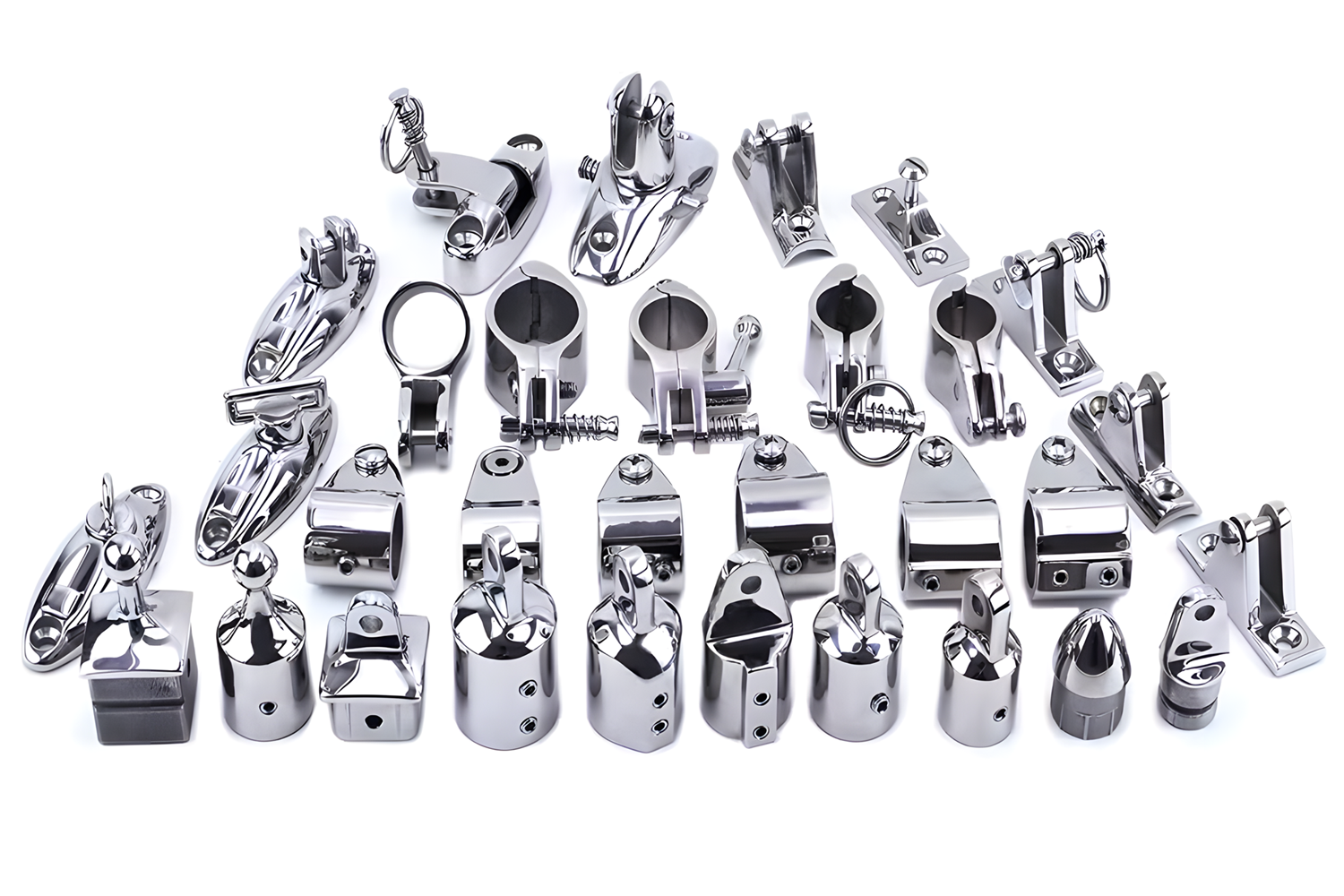Beyond the basic deck hinge, several kinds of Bimini hinges offer distinct advantages in certain applications.
1. Quick-Release Bimini Top Hardware
Quick-release hinges allow you to easily remove your Bimini top with no tools and pins or bolts to keep track of. Just push a spring-loaded switch or button to release the top from the hinge. Additionally, most quick-release Bimini top hinges leave only a rounded, low-profile fitting on the deck when the Bimini is removed. You’ll be aware of it if you step on one barefoot, but it doesn’t hurt. Tripping over or stubbing your toe on a traditional Bimini hinge is going to lead to some choice words - and possibly an unplanned swim.
2. Flush-Mount Bimini Top Hinges
Flush-mount Bimini hinges take the idea of quick-release hinges a step further. When the top is removed, the only thing remaining on deck is a roughly 1/8” thick flange. These hinges are ideal for inshore fishing boats where unobstructed gunwales and casting decks are critical. Their primary drawback is that they require a cutout in the deck for mounting. Other quick-release Bimini hinges mount on the surface of the deck and require only fastener holes.
3. Ball and Socket Bimini Hinges
Ball and socket-style Bimini top hinges use an eye end with a ball on the end instead of a hole. The portion of the hinge that is mounted to the boat is socket lined with smooth, quiet Delrin. Once the ball is inserted into the socket, a quick-release pin keeps it from coming out. Ball and socket hinges tend to be quieter when underway than other hinges, which have metal-to-metal contact and more “play.” They’re smoother and lower profile than traditional hinges but not as much so as quick-release or flush-mount hinges.
4. Rail-Mount Bimini Top Hinges
On pontoon boats, runabouts, tow boats, etc, Bimini tops are sometimes mounted to railings rather than to the deck. In this case, you’ll need a special hinge designed to clamp securely onto the railing. These can be traditional or quick-release hinges.
Post time: Feb-06-2025



